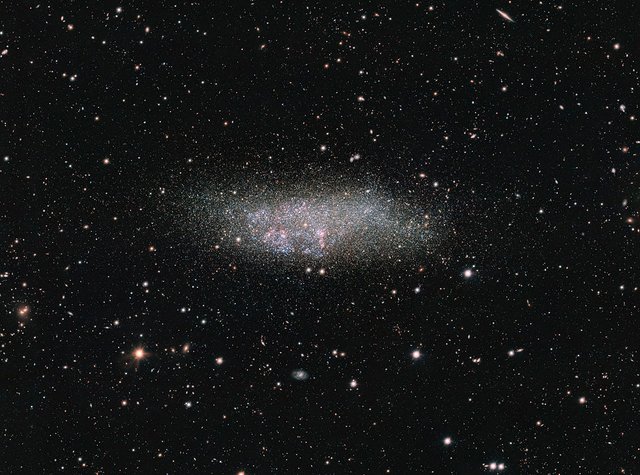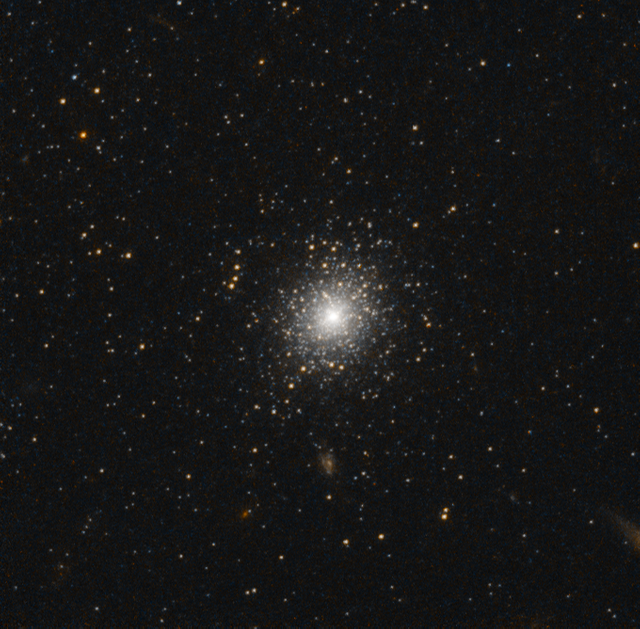Galaxy: Wolf Lundmark Melotte

The galaxy Wolf–Lundmark–Melotte (WLM), imaged by VLT. Image source: [1]
The Wolf-Lundmark-Melotte (WLM) galaxy is an irregular galaxy in the constellation Cetus, about 3 million light-years from Earth. It was discovered by the astronomer Max Wolf in 1909, who along with Knut Lundmark and P.J. Melotte, who identified it as a galaxy, give it its name. Of apparent magnitude 11.0 is an LSB galaxy, that is, it emits less light per unit area than a typical galaxy.
WLM is one of the most remote members of the local galactic group and being so far away it is possible that it has never interacted directly with any other galaxy in the local group. Nevertheless, the isolated universe possesses regions of star formation, recognizable by its characteristic pink tone, and young stars, blue and ardent. The discrete halo of the small galaxy extends about 8,000 light-years and is composed mainly of yellowish stars, ancient and cold.
WLM has, by itself, developed far from the influence of other galaxies and their stellar populations. Consequently, like a hidden human population with limited contact with outsiders, WLM represents a relatively imperturbable "state of nature" in which the changes that have occurred throughout its life have taken place, to a large extent, independent of the activity developed elsewhere.
More details here: WLM

WLM Globular Cluster, Hubble space telescope. Image source: [2]
European Southern Observatory (ESO)

@optimisticguy just up/voted your post. I like your writing style. If you want me to up/vote all your postings simply follow me @optimisticguy